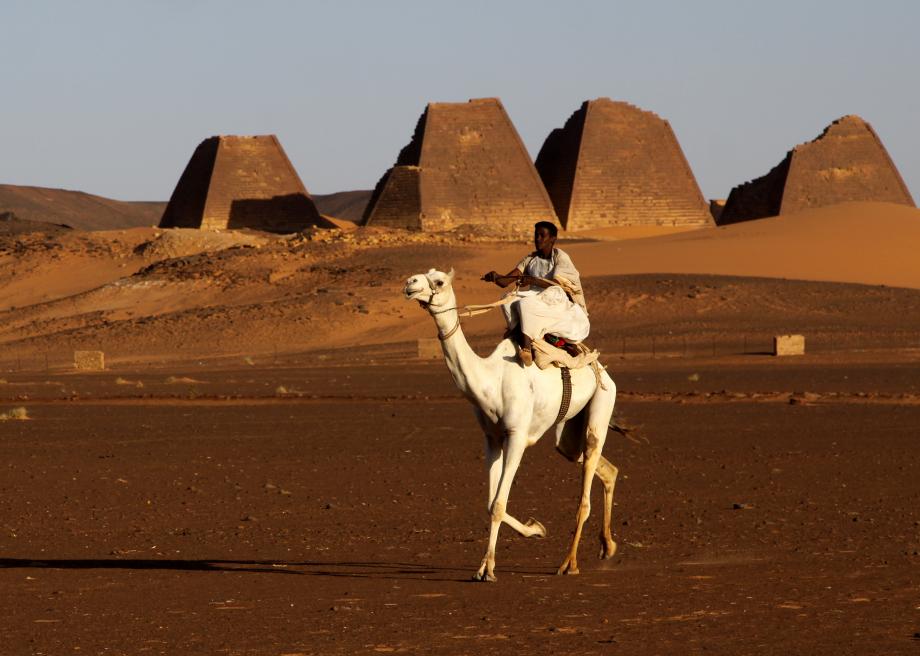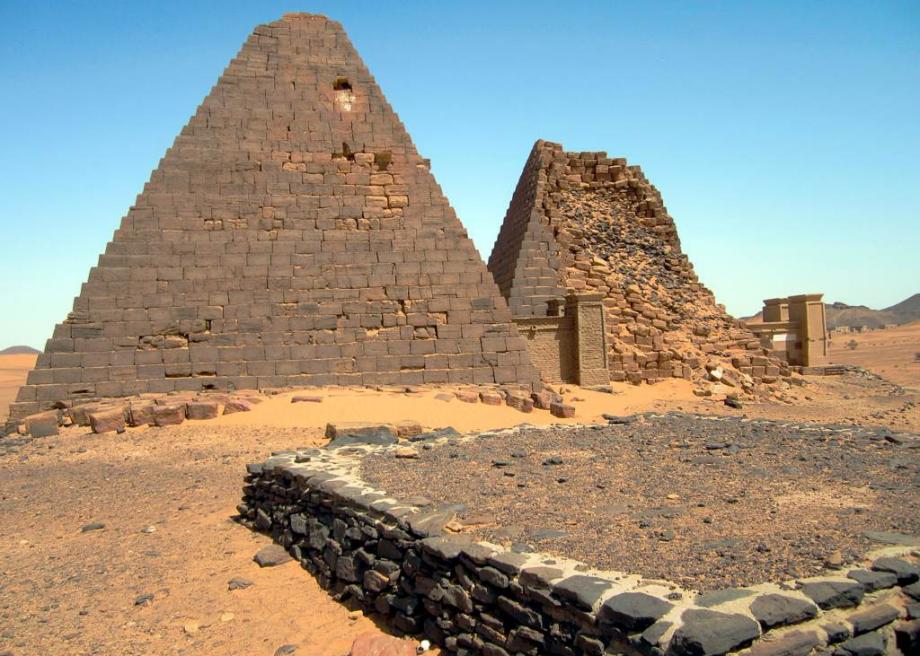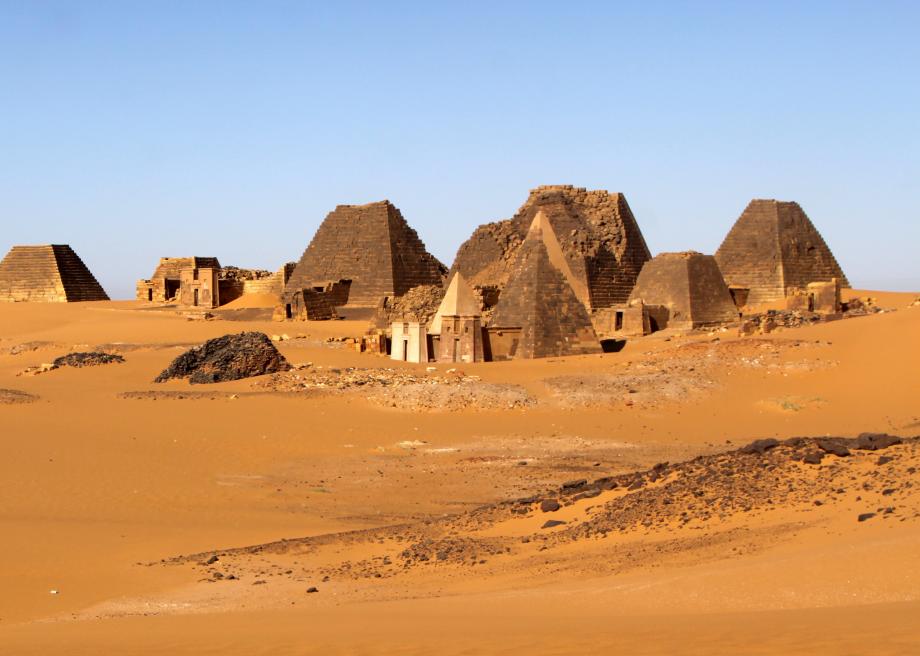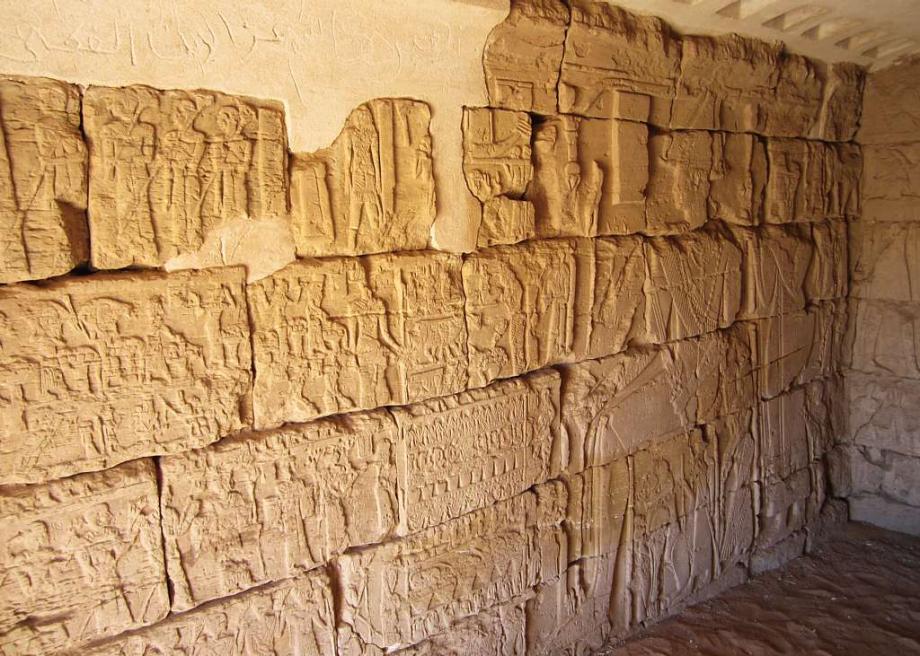Nubians on the Nile: The Other Ancient Pyramids of Northern Africa
Atlas Obscura on Slate is a blog about the world's hidden wonders. Like us on Facebook, Tumblr, or follow us on Twitter @atlasobscura.
Egypt isn't the only African country with ancient pyramids rising from its sands. In fact, there are more pyramids in one small section of the northern Sudanese desert than there are in the whole of Egypt.
During Egypt's 25th dynasty (760 BC until 656 BC), Meroe, now located in Sudan, was the capital of the Kingdom of Kush, ruled by Nubian kings who had conquered Egypt. Often overlooked in the history books, these black pharoahs presided over an empire that stretched from the Mediterranean Sea to present-day Khartoum.
Meroe, a city nestled against the Nile 200 miles north of Khartoum, contained a necropolis for royal burials. As in Egypt, Nubian kings and queens were buried with gold, jewelry, pottery, and, occasionally, pets. Some royals were mummified, while others had their remains burned or buried whole. A sandstone pyramid, steeper and more narrow than the Egyptian variety, was built over each tomb.
In all, about 220 pyramids were built in Meroe, spread across three sites. They remained relatively intact until the 1830s, when Italian treasure hunter Giuseppe Ferlini smashed the tops off 40 pyramids while searching for gold and jewels. In recent years, a few pyramids have been reconstructed to give travelers a sense of what they used to look like.
You can visit the Meroe pyramids via car ride and camel from Khartoum, but due to ongoing violence in Sudan, the Department of State currently advises against traveling to the country.
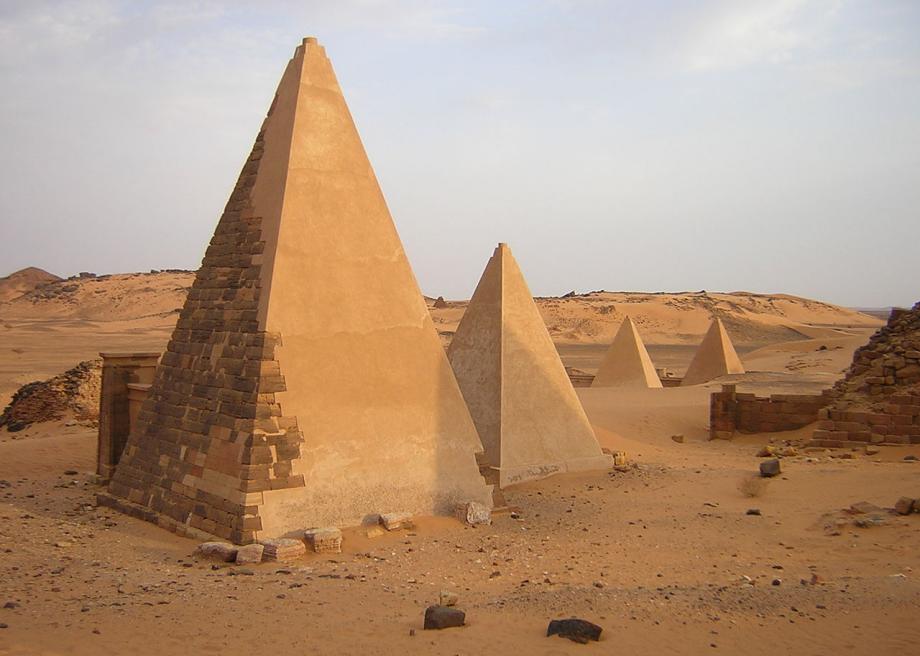
View Pyramids of Meroe in a larger map

